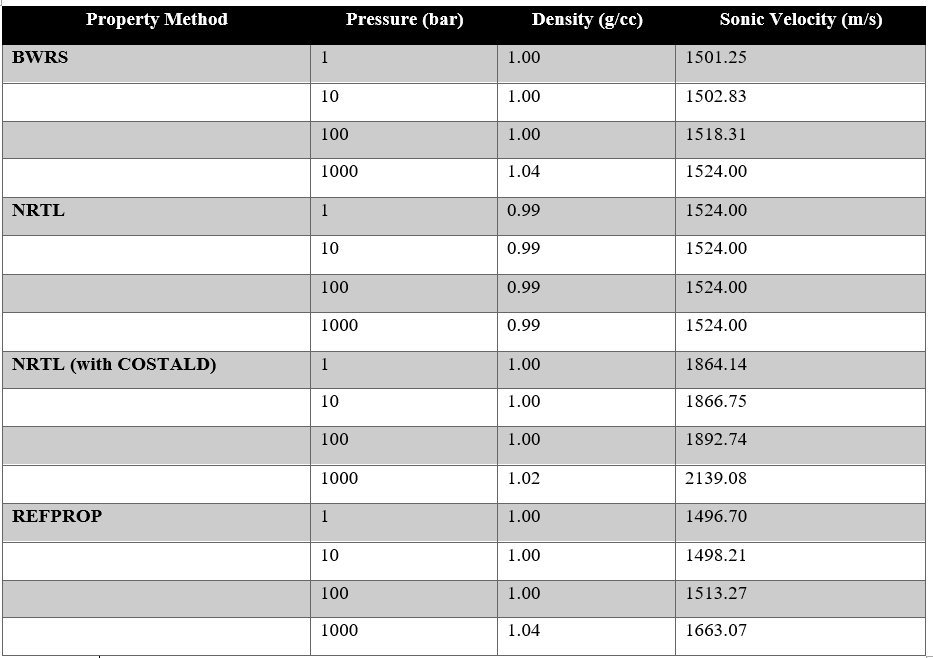Modeling and Evaluation of Sonic Velocity in Fluids Using Aspen Plus Property Methods
Project Description
Accuracy in the prediction of sonic velocity in fluids is critical for modeling compressible flow, pipeline safety, and process equipment design. This study evaluates the performance of various thermodynamic property methods in Aspen Plus—namely BWRS, NRTL, REFPROP, and EOS-based models—by comparing their predictions for water across a wide pressure range. Key modeling elements include pressure-dependent liquid volume estimation, heat capacity accuracy, and appropriate treatment of two-phase systems using the Nguyen–Winter–Greiner method, which is commonly applied in high-pressure flow simulations.
The analysis highlights substantial differences among property methods in predicting sonic velocity, particularly at elevated pressures. It offers clear guidance for selecting suitable thermodynamic models to ensure accurate Mach number estimation and reliable fluid dynamic calculations. The outcomes serve as a practical reference for engineers aiming to enhance safety margins and optimize system performance in industrial applications involving high-velocity or compressible flows.
Process Flow Diagram

Sonic Velocity Estimation Across Property Methods
To quantify the impact of different thermodynamic models on sonic velocity predictions, a comparative study was performed using Aspen Plus. The models investigated include BWRS, NRTL, REFPROP, and various EOS-based formulations. For consistency, water was used as the test fluid across all simulations, with results evaluated over a range of pressures at constant temperature. The differences in predicted sonic velocity directly illustrate the importance of selecting the appropriate property package, especially in compressible flow scenarios.

Above table summarizes the calculated sonic velocities using each property method at multiple pressure levels. The data demonstrate that while REFPROP and BWRS yield closely matching results under certain conditions, substantial deviations occur under high-pressure regimes—emphasizing the need for model validation in critical applications.
Project Insights
Thermodynamic Model Selection
• Property method selection (e.g., BWRS, NRTL, REFPROP) critically affects sonic velocity accuracy.
• EOS-based models demonstrate superior performance in high-pressure compressible flow regimes.
Role of Physical Properties
• Accurate heat capacity data is essential for consistent velocity calculations in liquids.
• Pressure-dependent liquid volume models improve reliability in dense-phase simulations.
Two-Phase Flow Modeling
• The Nguyen–Winter–Greiner approach effectively estimates sonic velocity in vapor-liquid systems.
• This method is widely adopted for safety-critical applications like relief and pipeline sizing.
Engineering Applications
• Correct Mach number prediction supports optimal equipment design and flow assurance.
• Comparative analysis guides engineers in selecting suitable property packages for simulations.
Conclusion
ChatGPT said:
This project demonstrates that accurate prediction of sonic velocity in fluids depends heavily on the selection of thermodynamic property methods within Aspen Plus. Models such as BWRS, NRTL, EOS-based packages, and REFPROP significantly influence results, especially when accounting for pressure-dependent liquid volume and heat capacity. For two-phase systems, the Nguyen–Winter–Greiner method offers a practical approach, making this study valuable for engineers optimizing process design, fluid flow analysis, and safety calculations.
